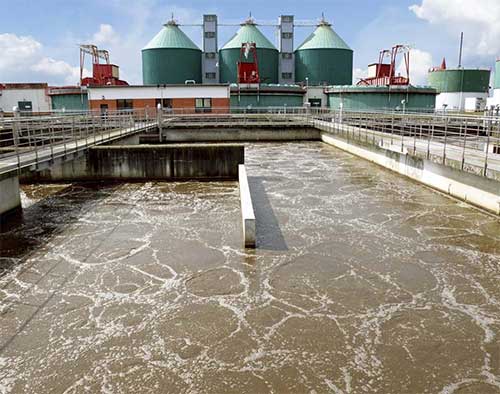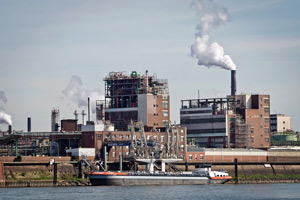Industrial Waste Water Treatment-- Protect the Setting with Professional Water Treatment Services
Industrial Waste Water Treatment-- Protect the Setting with Professional Water Treatment Services
Blog Article
Developments and Breakthroughs in Hazardous Waste Water Therapy Technologies
The landscape of industrial wastewater treatment is undergoing a transformative change, driven by developments that boost both effectiveness and sustainability. Arising technologies, such as membrane layer bioreactors and microbial gas cells, are redefining pollutant removal processes while adding to energy generation. Resource recovery techniques are getting grip, aligning with circular economy principles. As governing standards develop, the assimilation of AI and artificial intelligence into wastewater monitoring systems promises to make sure and streamline procedures conformity. Nevertheless, the complete ramifications of these improvements elevate essential concerns regarding their scalability and long-lasting effect on market techniques.
Summary of Waste Water Treatment Technologies
Wastewater treatment technologies include a series of techniques made to remove pollutants from commercial effluents before their launch into the atmosphere. These modern technologies are crucial for maintaining ecological equilibrium and making certain conformity with environmental laws. The primary classifications of wastewater treatment include physical, chemical, and biological approaches, each offering distinctive functions based on the nature of the contaminants present.

Biological therapy methods utilize bacteria to degrade natural issue, making them especially reliable for organic-rich effluents. Methods like activated sludge and biofilm activators harness the all-natural degradation abilities of bacteria, bring about significant decreases in biochemical oxygen demand (BODY)
Advanced Filtration Methods
Advanced filtration strategies stand for a crucial evolution in the realm of commercial wastewater therapy, enhancing the effectiveness of pollutant elimination procedures. Industrial Waste Water Treatment. These approaches incorporate an array of modern technologies, including microfiltration, ultrafiltration, nanofiltration, and turn around osmosis, which supply sequential obstacles for various bit sizes and chemical frameworks
Microfiltration and ultrafiltration utilize membrane layer systems to get rid of put on hold solids, bacteria, and bigger organic molecules, improving the top quality of effluent before more therapy. Nanofiltration bridges the void between ultrafiltration and turn around osmosis, properly eliminating natural substances and divalent ions, thus lowering the lots on downstream processes.
Reverse osmosis provides the greatest degree of filtration by allowing just water and little molecules to travel through its semi-permeable membranes, making it ideal for reclaiming top quality water from industrial effluents. Current developments in membrane innovation, including the development of more resilient and fouling-resistant materials, have actually substantially enhanced operational performance and decreased prices.
Integrating these sophisticated purification techniques not just boosts the overall therapy procedure but likewise adds to sustainability initiatives by allowing water reuse and source recovery in commercial settings. (Industrial Waste Water Treatment)
Organic Treatment Technologies

In addition, the growth of engineered organic systems, such as membrane bioreactors (MBRs), combines biological treatment with advanced membrane layer filtering. This integration enables for greater effluent top quality and minimized impact, making it appropriate for space-constrained commercial facilities. Innovations in genetically crafted bacteria have likewise arised, enhancing the biodegradation of details impurities, such as drugs and heavy steels, that are typically challenging to remove.
Furthermore, the execution of bioaugmentation methods, where helpful germs read more are presented to boost the existing organic treatment procedures, has shown encouraging outcomes in improving treatment performance. These developments collectively indicate a trend towards more efficient and sustainable organic therapy methodologies that can adapt to the advancing complexities of commercial wastewater streams. As sectors continue to prioritize ecological conformity, these biological technologies will certainly play an essential role in wastewater monitoring.

Source Recovery Techniques
In industrial settings, the combination of source recovery methods has actually become increasingly vital for improving sustainability and decreasing waste. These methods concentrate on extracting beneficial products and power from wastewater streams, consequently changing potential contaminants right into recyclable resources.
One noticeable approach is vitamins and mineral recuperation, where nitrogen and phosphorus, typically existing over in wastewater, are captured additional reading and exchanged plant foods. This not only decreases ecological influences however also provides a circular economic climate remedy for farming applications. Additionally, innovations such as anaerobic food digestion enable the conversion of organic waste into biogas, a sustainable energy source that can balance out nonrenewable fuel source usage in industrial operations.
Moreover, advanced filtering and membrane technologies facilitate the recuperation of industrial by-products such as metals and salts. These recovered products can be rehabilitated into production procedures, minimizing the requirement for virgin resources.
Future Fads in Drainage Administration
As markets progressively prioritize sustainability, the future of wastewater monitoring is established to go through substantial changes. Technical innovations, such as expert system and artificial my company intelligence, will allow more effective surveillance and administration of wastewater systems. These modern technologies can forecast maintenance demands, enhance treatment processes, and enhance decision-making, ultimately decreasing operational costs and environmental effect.
In addition, the assimilation of round economic situation concepts will certainly play a vital duty in wastewater monitoring. Industries are expected to change in the direction of systems that not just deal with wastewater yet also recoup valuable resources, such as nutrients, water, and energy. This change will certainly reduce waste and promote the reuse of materials, lining up with worldwide sustainability objectives.
Arising therapy techniques, such as membrane bioreactors and progressed oxidation procedures, will even more enhance the efficiency of wastewater treatment, allowing for greater quality effluents appropriate for reuse. Furthermore, governing structures are most likely to develop, stressing more stringent requirements for wastewater discharge and encouraging industries to embrace innovative treatment remedies.
Conclusion
In conclusion, the evolution of commercial wastewater treatment innovations shows a substantial shift in the direction of boosted performance and sustainability (Industrial Waste Water Treatment). Innovations in innovative filtering strategies, biological therapies, and resource healing techniques highlight the industry's commitment to environmental stewardship.
The landscape of commercial wastewater therapy is undertaking a transformative change, driven by technologies that boost both efficiency and sustainability.Wastewater treatment technologies encompass a range of approaches made to eliminate pollutants from industrial effluents prior to their release right into the atmosphere.Harnessing the power of organic processes has actually led to considerable innovations in the treatment of industrial wastewater.In addition, the application of bioaugmentation strategies, where valuable microbes are presented to boost the existing biological therapy procedures, has actually shown promising results in improving treatment efficiency. These developments collectively represent a pattern towards more sustainable and effective organic therapy methodologies that can adapt to the evolving complexities of commercial wastewater streams.
Report this page